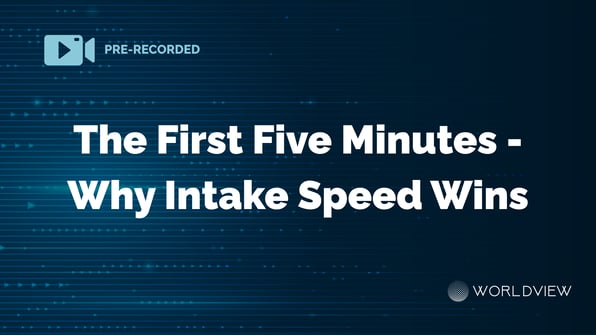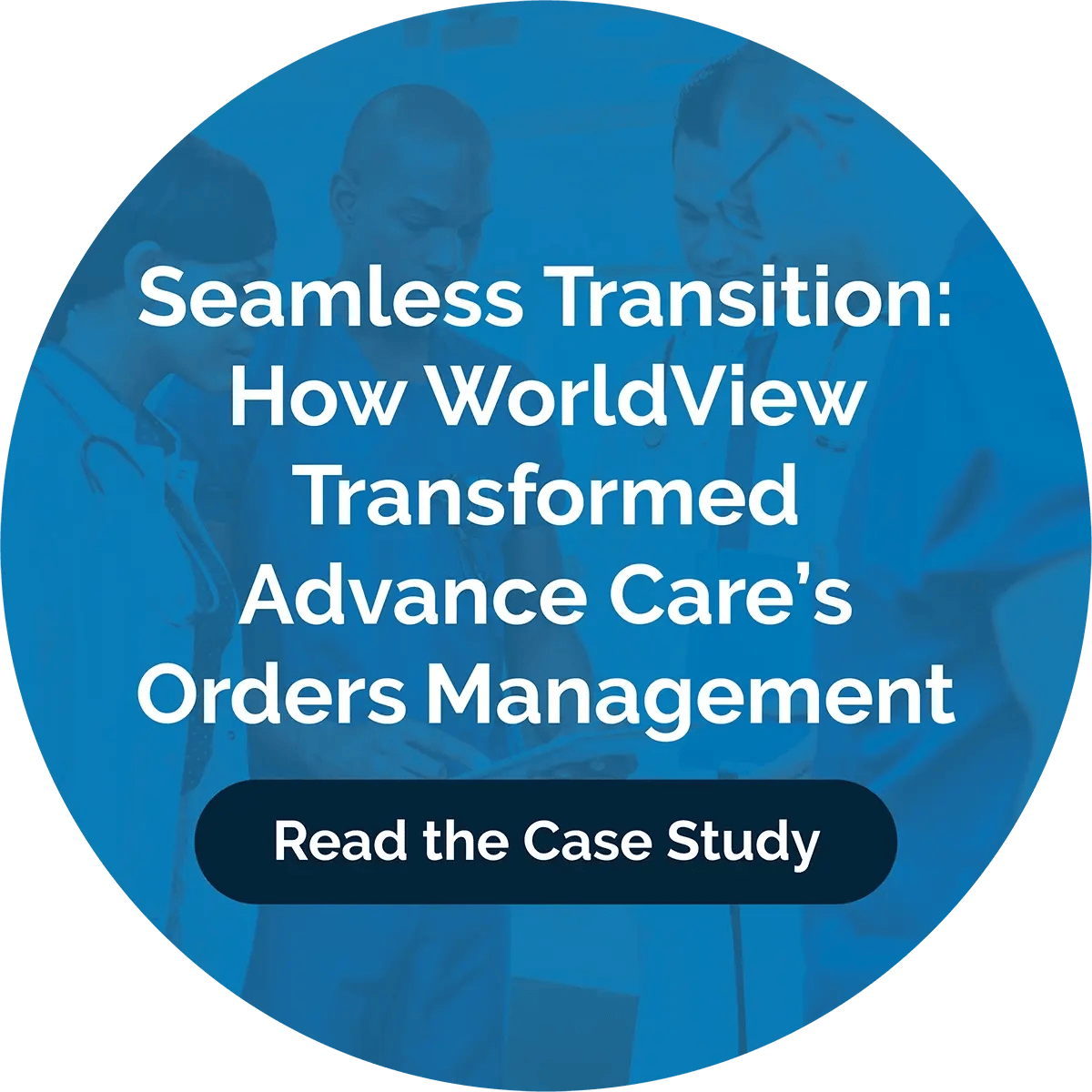Webinar Recording: The First Five Minutes: Why Intake Speed Wins

The First 5 Minutes: Why Intake Speed Wins
When a referral lands, the clock starts ticking - for you, for your referral partner, and for the patient’s family. Those first five minutes decide everything.
In this webinar, we explore why fast intake isn’t just a nice-to-have, it’s essential. You’ll learn how intake speed directly affects patient trust, agency reputation, and even revenue growth. More importantly, we’ll show you practical ways to boost intake speed without overwhelming your team.
What you’ll learn:
✅ How intake speed affects trust and patient experience – Time stamp: 1:50
✅ Why slow responses damage your agency’s reputation – Time stamp: 3:24
✅ Real data on how fast agencies see higher conversion rates – Time stamp: 4:15
✅ Simple tools that help teams handle after-hours and high-volume referrals – Time stamp: 7:51
✅ How to make intake speed a team-wide priority – Time stamp: 9:52
Plus, get actionable tips on what you can do this week to start moving faster – Time stamp: 10:38
WEBINAR TRANSCRIPT
Cortney Swartwood [00:06]
Hey everyone, and welcome to our fifth session in the mini webinar series. I’m Cortney Swartwood, Senior Marketing Manager here at WorldView. Thanks for joining today’s webinar, “The First 5 Minutes: Why Intake Speed Wins.”
Before we dive in, a quick rundown of how to get the best experience. On your screen, you’ll see the presentation, a Q&A window, and a survey. All those windows are movable and resizable. Drop any questions into the Q&A window, not the chat, so we can track them easily. You can also ask for help there if you have any technical issues.
The survey window lets you share feedback and request more info about any of our solutions. There’s a resources icon in the toolbar at the bottom of your screen where you can download today’s slides.
This webinar is being recorded, and we’ll send you the on-demand link tomorrow so you can rewatch or share it with your team.
Today, we’re talking about something that seems simple but has a huge impact—speed. Specifically, what happens in the first 5 minutes after a referral hits your system. Jen Strachan is joining me today. She’s the SVP of Marketing at LivTech. I’ll hand it over to Jen to introduce herself.
Jennifer Strachan [01:50]
Thanks, Cortney. I’m Jen Strachan, SVP of Marketing at LivTech. I’ve spent my whole career in marketing for B2B software companies, including higher ed and legal tech, but for the past five years, I’ve focused on post-acute care technology.
This work is meaningful because it impacts seniors and their families. Eventually, everyone faces the need to care for someone, so supporting this industry is really special. I’m excited to be here to talk about why intake speed matters so much, especially in the first five minutes.
Think about your own experiences when you needed help—whether that was calling a doctor, a repair service, or even ordering food. How fast they respond shapes how you feel about them almost instantly. Healthcare is no different.
When a hospital discharges a patient or a family calls a hospice, people are scared and overwhelmed. Speed matters. Those first five minutes shape the entire experience.
The clock starts the moment the referral arrives—not just for you, but for your referral partner, the family, and your competitors. Whether or not hospitals or families say it out loud, they are judging how fast you respond. If nothing happens quickly, it feels like a warning sign.
Here’s the reality: Your intake is your brand. If a referral partner sends you a patient and hears nothing back, they might assume you’re too busy, disorganized, or not interested. That might not be true, but that’s how it feels.
On the flip side, when you respond quickly with professionalism, you become the go-to agency. That’s how you build trust and reputation.
Now, let’s talk numbers. Agencies that respond within 15 minutes see a 20 to 25 percent higher conversion rate. They also experience fewer delays in starting care and more repeat referrals.
Speed doesn’t just make you look good—it actually makes your operations better. Fast intake means charts are moving, schedulers are looped in faster, and families start to feel more at ease.
Think about the emotional side too. Imagine a daughter caring for her elderly father around the clock. She finally agrees to home health or hospice, submits a referral, and then… silence. In those minutes of waiting, anxiety builds. She wonders, “Did they get it? Should I call again?”
But if your team responds quickly—even just to confirm receipt—you’ve already started creating emotional safety. That daughter feels relief knowing she’s not handling this alone. That’s the experience families remember long after care ends.
Speed doesn’t happen by accident. You need the right systems: a centralized intake dashboard, the ability to flag and prioritize referrals, real-time alerts, and clear ownership for follow-ups.
AI tools like Referral AI powered by Kno2 help by detecting new referrals, sorting them by payer or urgency, and routing them without manual effort.
When you get intake right, you’re not just moving faster—you’re building a reputation as the easiest agency to work with. Referral partners notice. Families talk. Nurses walk into homes prepared. Some agencies have built their entire growth strategy around being the fastest to respond.
You don’t need a huge team—you need the right workflows and tools that support the people doing the work.
Here’s the recap. The first five minutes matter more than most people realize. Intake isn’t a back-office task; it’s part of your brand. Speed increases conversions and builds trust. Families and partners crave reassurance, not silence. And when you have the right tools in place, you can deliver that speed without burning out your team.
Cortney Swartwood [07:20]
Awesome. Fast intake isn’t just good for business—it’s good for patient care too. Thanks for breaking all that down, Jen.
Let’s jump into a few questions before we wrap up. First one: “We’ve had trouble getting consistent follow-up from intake after hours. Any tips?”
Jennifer Strachan [07:51]
Yeah, that’s a common one. One simple fix is using automated notifications or tools that flag new referrals and alert the on-call team. That prevents things from sitting overnight. Also, designate a single point of contact for after hours so there’s no confusion about whose job it is.
Cortney Swartwood [08:12]
That makes sense. Even small changes like that can make a big difference. Next question: “Our team’s biggest issue is keeping up with the volume. How do we maintain fast response times when referrals spike?”
Jennifer Strachan [08:32]
Great question. A lot of agencies try to triage manually when volume spikes, but that’s exactly when automation matters most. The right tools can sort referrals by urgency and route them to the right person so your team isn’t wasting time on duplicate faxes or non-actionable stuff.
Cortney Swartwood [09:01]
Got it. Next one: “How does Referral AI fit into our current workflow?”
Jennifer Strachan [09:12]
WorldView integrates with your EMR and works with your existing email or fax channels. Referral AI automatically pulls referrals, tags them, and routes them so your team only focuses on qualified referrals instead of digging through inboxes.
Cortney Swartwood [09:32]
Love it. Simple and effective. Next: “How do we make speed a shared responsibility across the team?”
Jennifer Strachan [09:52]
Leadership has to set the tone. Speed can’t just be a number on someone’s to-do list. It needs to be a mindset across scheduling, clinical leadership, and marketing. Everyone should know that response time affects the agency’s reputation.
Cortney Swartwood [10:13]
Totally agree. Last question: “What’s one small thing an agency can do this week to improve intake speed?”
Jennifer Strachan [10:38]
Measure it. Just track how long it takes from referral receipt to first contact. Once you know the average lag time, you’ll start seeing where the bottlenecks are and where to improve.
Cortney Swartwood [10:52]
Awesome. Thanks again, Jen, for such a thoughtful conversation. Thanks to everyone who joined today.
If we didn’t get to your question, don’t worry—we’ll follow up in the next 24 to 48 hours. You can also email us at the address on the screen if something comes to mind later.
We’d love your feedback on today’s session. Please complete the last two questions in the survey and hit submit when you’re done.
And be sure to join us for our next webinar with Cody Godley, where he’ll dive deeper into how Referral AI actually works within your EMR. We’re looking forward to it. Have a great rest of your day. Bye, everyone.
Blog Post Tags
Industry Insights, Healthcare, Hospice, AI, referrals, General, Blog, leadership, Referral AI, Healthcare TrendsGet Awesome Content Delivered Straight to Your Inbox!
Posts by topic
- Healthcare
- Business
- AI
- Hospice
- AP Workflows
- Home Care Management
- hospice-care
- General
- Industry Insights
- agency
- Blog
- Commercial
- reporting
- Data Analytics
- billing
- referrals
- News
- Referral AI
- business goals
- Operations
- business development
- partners
- Integration
- Healthcare Trends
- leadership
- Medicare
- Compliance
- audit
- medicaid
- Better Charting
- regulations
- Application
- Automation
- finance
- CRM
- DMSi
- Events
- KanTime
- Press Release
- Revenue Growth
- Announcements
- Artificial Intelligence
- EHR
- ESign
- Guides
- Homecare Homebase
- Mobile
- Physician Order Tracking
- axxess
- clinical
- interoperability
- payor See All See Less


.png?width=596&name=WV%20Hc%20Clinical%201%20Web%20(3).png)
.png?width=596&name=WV%20Hc%20Clinical%201%20Web%20(2).png)
.png?width=596&name=WV%20Hc%20Clinical%201%20Web%20(5).png)